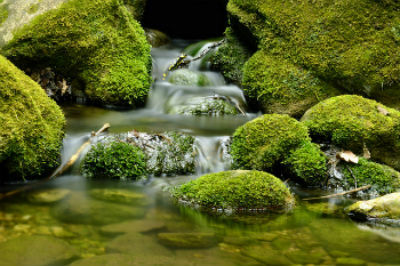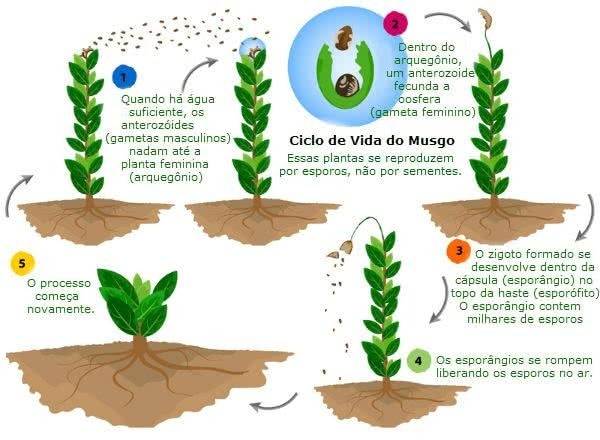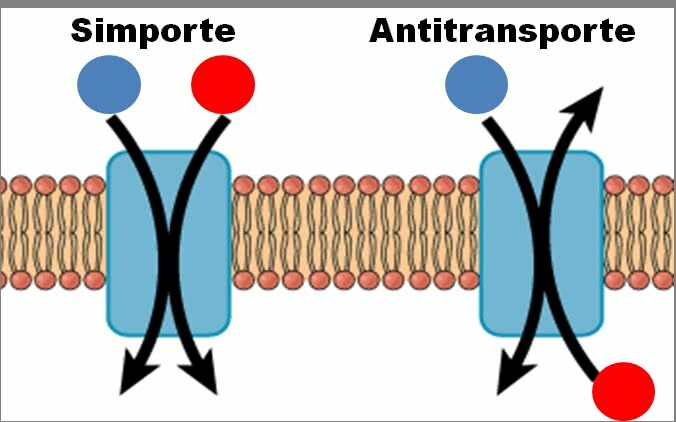Mosses constitute the majority of bryophyte plants. They are small plants and have a simple structure, they do not have conducting vases, flowers and seeds.
Mosses can be found in almost every part of the world, even in the frozen regions.

Mosses
Features
Mosses live in moist, shady environments. They can grow under different substrates like soil, rocks, tree trunks and even on walls. Some species of mosses form veritable green mats, covering large areas.
The body of the moss, called the stalk, is composed of three parts: rhizoids, kaoloid and phylloids.
- You rhizoids they fix the plant to the substrate and absorb the water and mineral salts necessary for its development. Mosses do not have a true root structure.
- O kaoloid it consists of a small stem from which the phylloids depart.
- You phylloids are structures responsible for photosynthesis, represent the leaves of the moss.
In the body of the moss there are no specialized organs for the absorption of water or even for transporting it to more distant parts of the plant. This condition limits your growth. That's why mosses are always small and low.
Mosses are the first plants to appear in the process of ecological succession, because they specialize in colonizing bare surfaces. Mosses prepare the soil for the development of other vegetables.
Learn more about Bryophytes.
Reproduction of Mosses
Mosses have male or female plants, they are dioecious.
Male moss produces anterozoids (male gamete) that reach the archegon through water. Inside the archegon, an anterozoid fertilizes the oosphere (female gamete), forming a zygote (2n).
The zygote develops into an embryo. The embryo also develops and gives rise to the sporophyte, a temporary structure of moss, located at the end of the phylloids.
The sporophyte harbors the sporangia, where the spores they are produced by meiosis. When the spores are released into the environment, they restart their life cycle.

Moss life cycle
Types of Mosses
Mosses can be classified into three classes: Sphagnidae, Andreaeidae and Bryidae.
- Sphagnidae class: “peat mosses”. They differ from other mosses in that their phylloids present dead cells, large and with perforations. They feature great water absorption capacity.
- Andreaeidae class: “granite mosses”. They receive this name for inhabiting mountainous regions, being found in granitic rocks.
- Bryidae class: “true mosses”. It is the most diverse and abundant class.
Learn more about plant kingdom.


